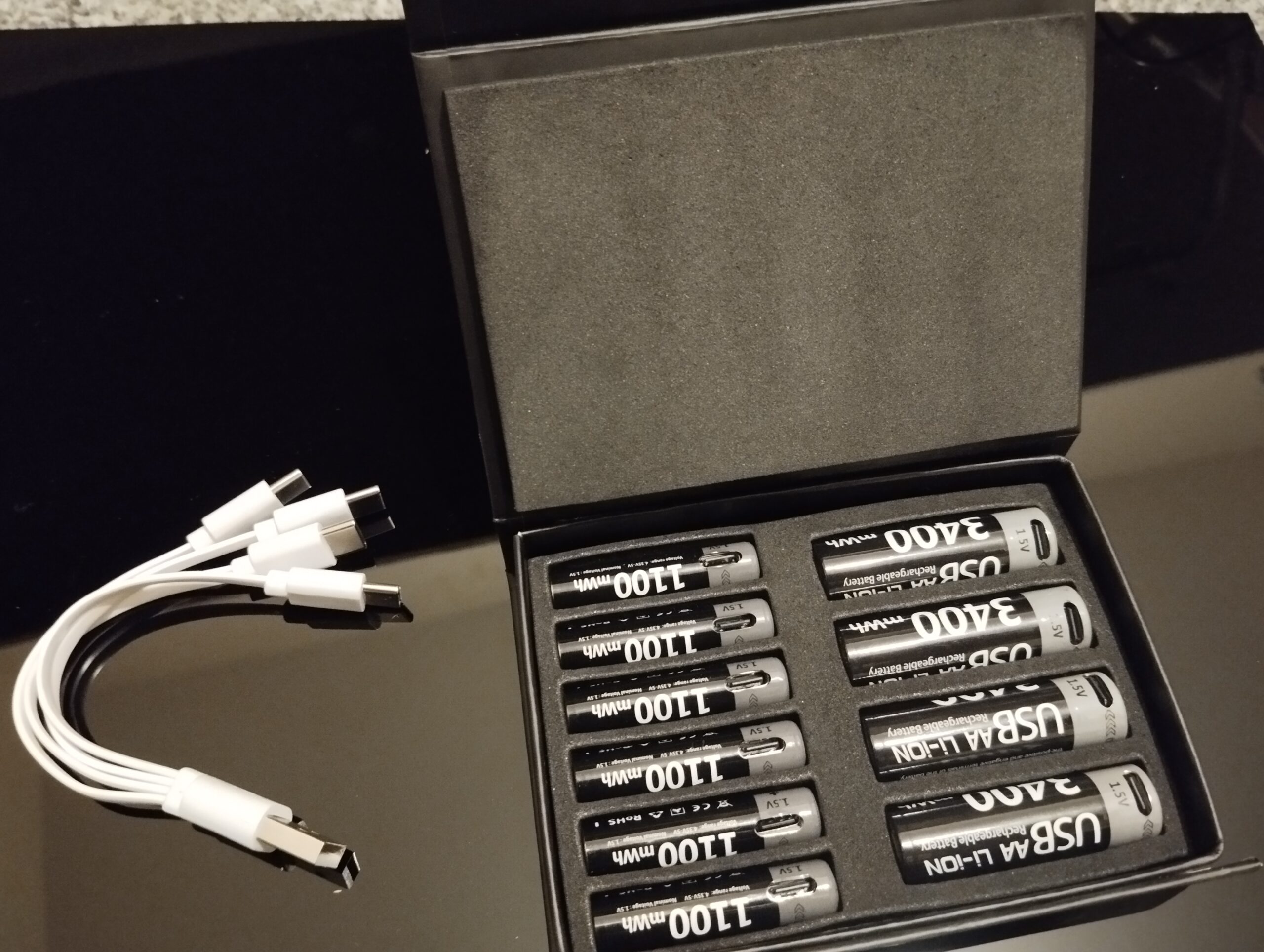Your cart is currently empty!
Lithium Rechargeable batteries AAA, AA, 9V
A smarter way to power your devices while reducing costs and waste in the long run.These batteries can be charged directly with an usb c cable and don’t need a docking station.Nickel rechargeable batteries (nimh) are also an option but don’t hold their charge well when not in use, provide 1.2 V for aaa and aa which makes most devices not work (as if the batteries were empty) and have no overcharging protection, which can make them swell and potentially burst.
Description
Lithium vs NiMH rechargeables:
- Higher Energy Density: Both lithium rechargeable batteries and disposable lithium batteries can offer similar runtime per charge, but rechargeable lithium batteries stand out because they can be recharged hundreds of times. In contrast, disposable lithium batteries are single-use and must be replaced after their charge is depleted. NiMH rechargeable batteries generally provide lower energy density than lithium, resulting in shorter runtimes.
- Cost-Effective: Lithium rechargeables save money over time because they replace disposable batteries and offer longer life cycles compared to both NiMH rechargeable and disposable options.
- Lightweight: Lithium rechargeable batteries are lighter than NiMH rechargeable batteries, improving the portability of devices.
- Fast Charging: Lithium rechargeables typically charge faster than NiMH rechargeable batteries, although disposable lithium batteries do not need to be charged at all.
- Low Self-Discharge: Lithium batteries hold their charge much longer when unused compared to NiMH, which tends to self-discharge more rapidly over time.
- Eco-Friendly: Lithium rechargeables are more eco-friendly since they can be reused hundreds of times, reducing overall waste when compared to disposable batteries. NiMH batteries, while rechargeable, still have shorter life cycles than lithium.
- Stable Performance: Lithium rechargeable batteries maintain consistent power output until they are nearly depleted, unlike disposable batteries (especially alkaline), which can show a decline in performance as they discharge. NiMH batteries may also exhibit performance drops as they drain.
- Wide Temperature Range: Lithium rechargeable batteries generally perform better than NiMH in extreme temperatures.
- USB Type-C Charging: Many lithium rechargeable batteries now offer modern charging solutions, such as USB Type-C, making them compatible with current devices. Disposable batteries, on the other hand, need to be replaced once they are depleted.
- Overcharge Protection: Lithium rechargeable batteries typically come with built-in overcharge protection, preventing damage from overcharging, unlike disposable batteries or even NiMH, which might degrade faster if not properly managed.
A few applications:
TV remotes, wireless mice & keyboards, gaming controllers, smoke detectors, flashlights, toys & gadgets, wireless headphones, clocks, portable speakers, camera flashes, radios, shooting targets, electric toothbrushes, home security systems, wireless tools, doorbells, power banks, LED lights.
Additional information
| Type | 4 x 9V, 8 x AAA 1.5V, 4 x AA 1.5 V, 6 AAA + 4 AA KIT |
|---|



